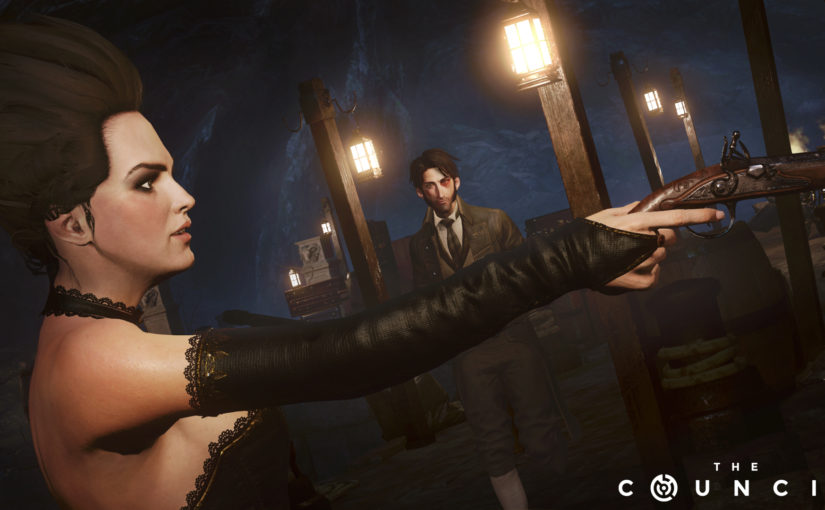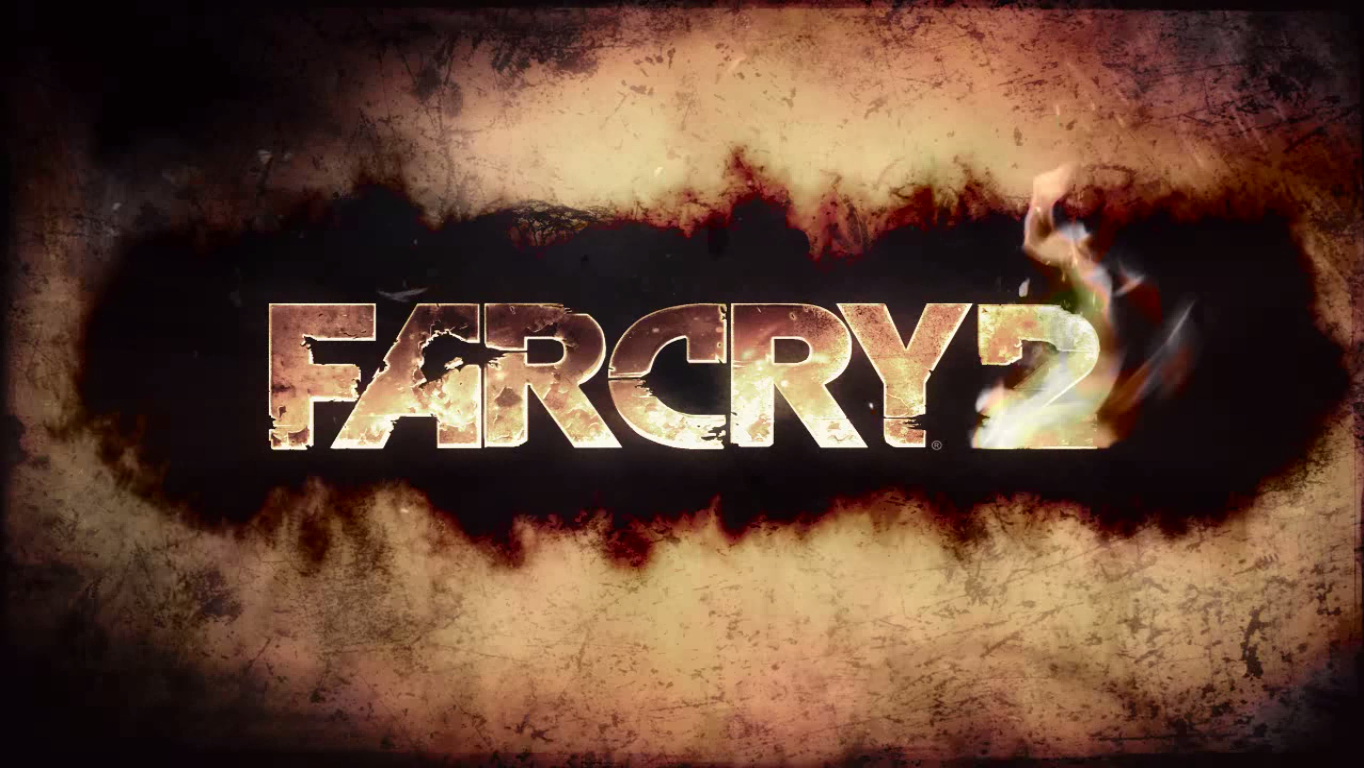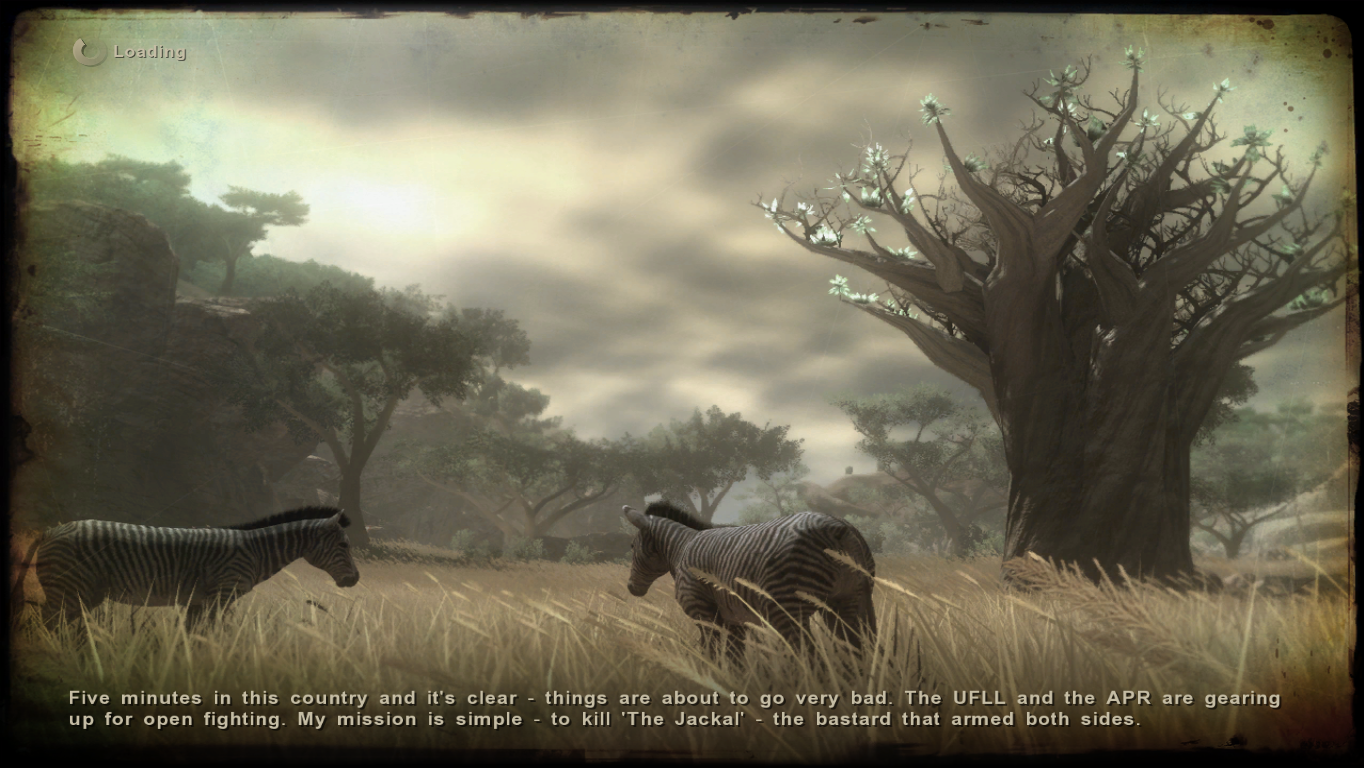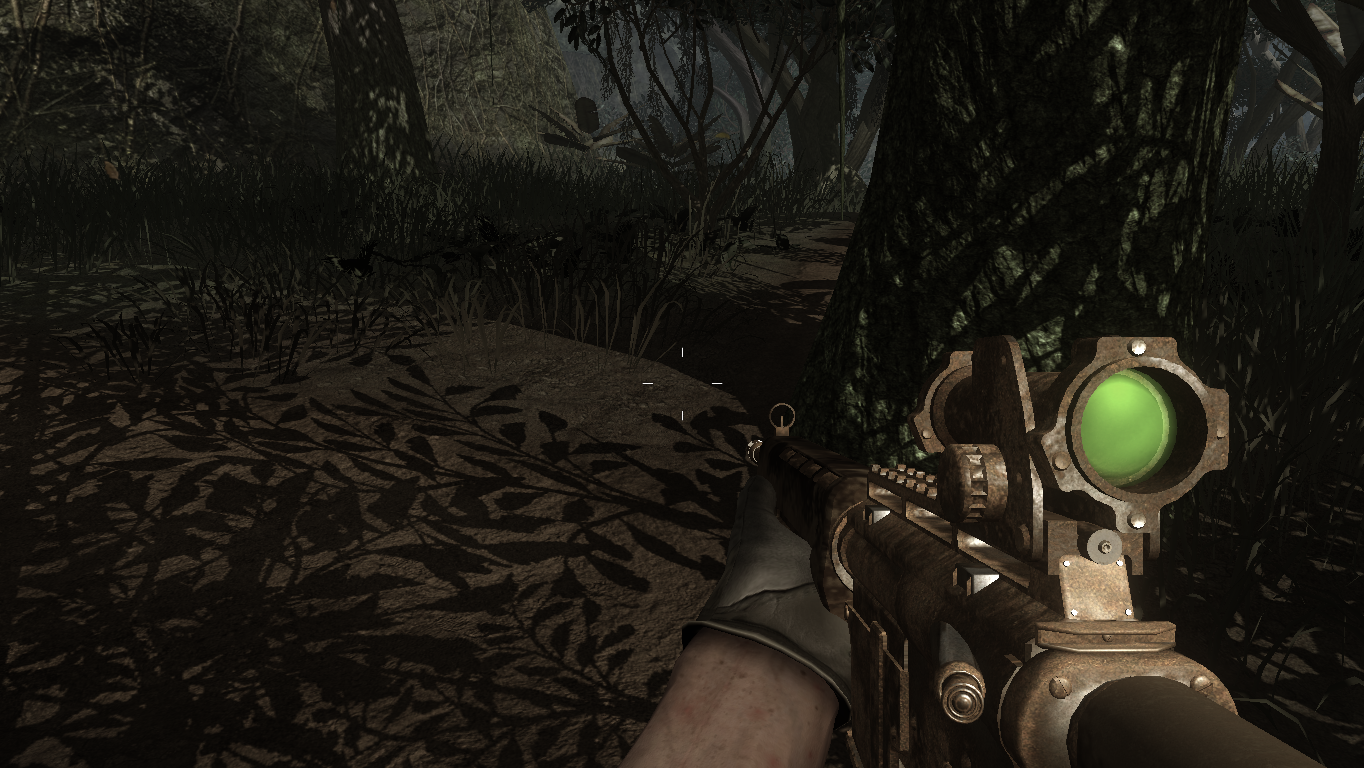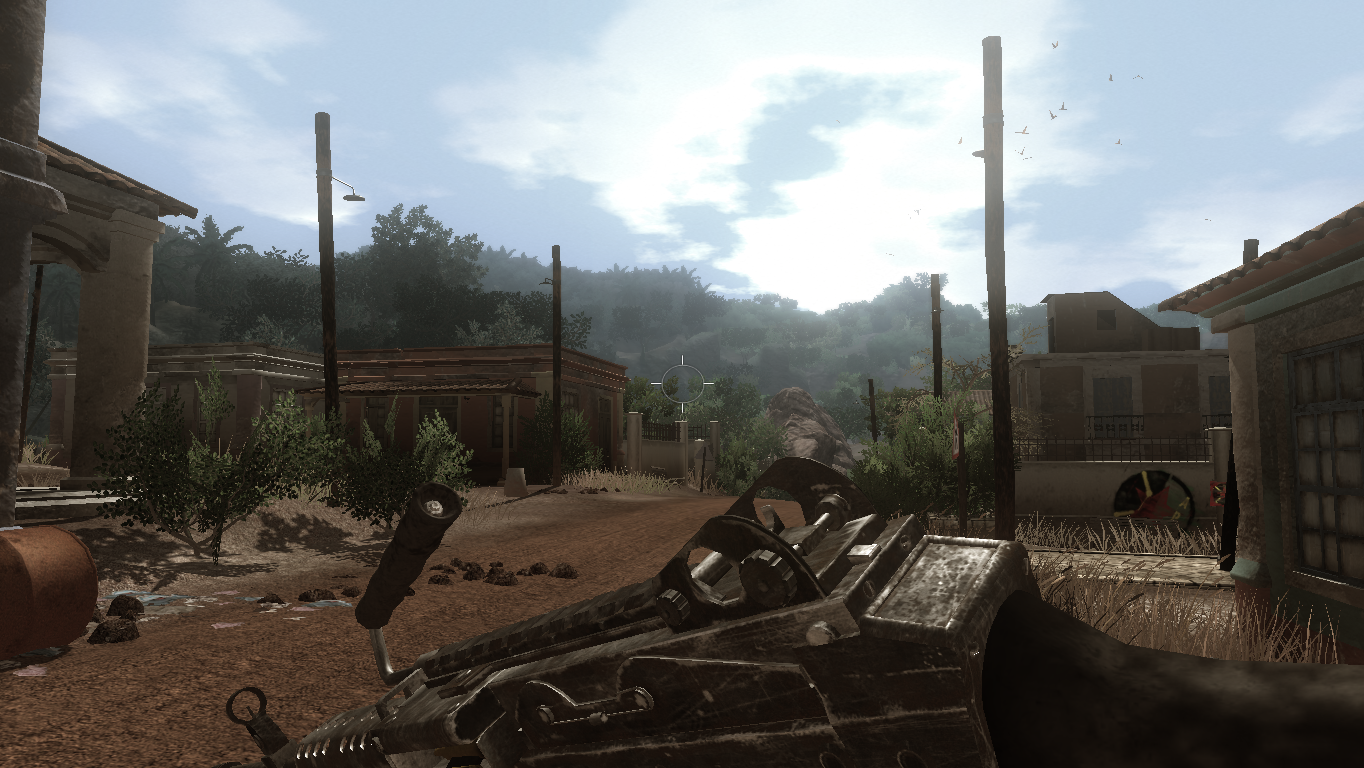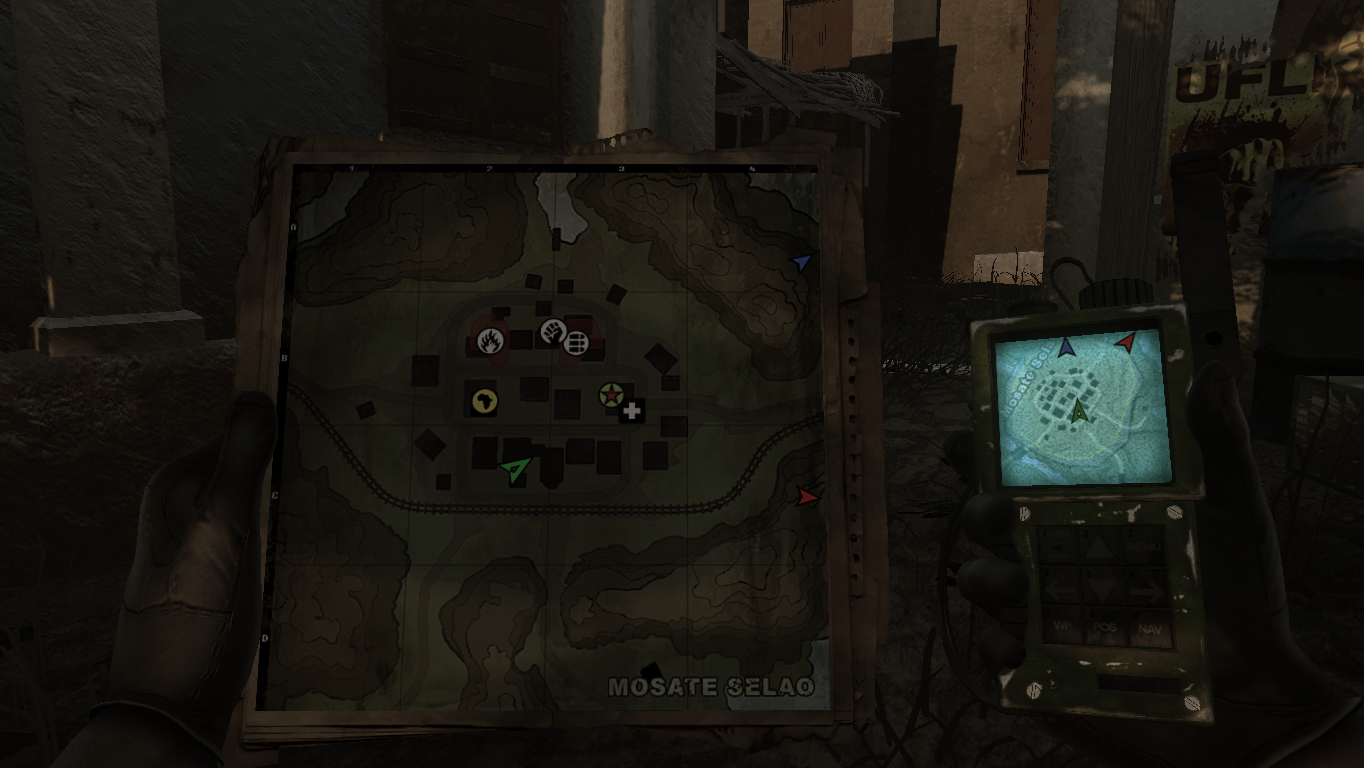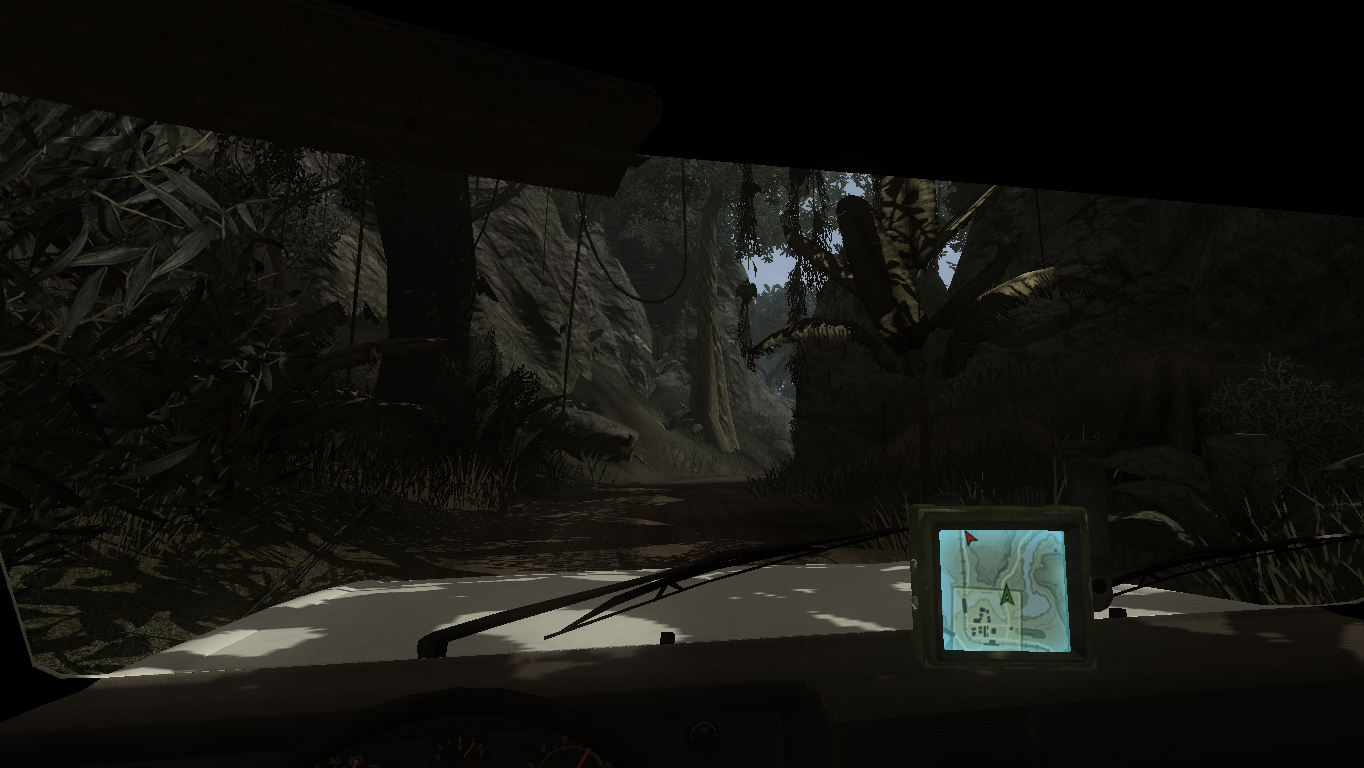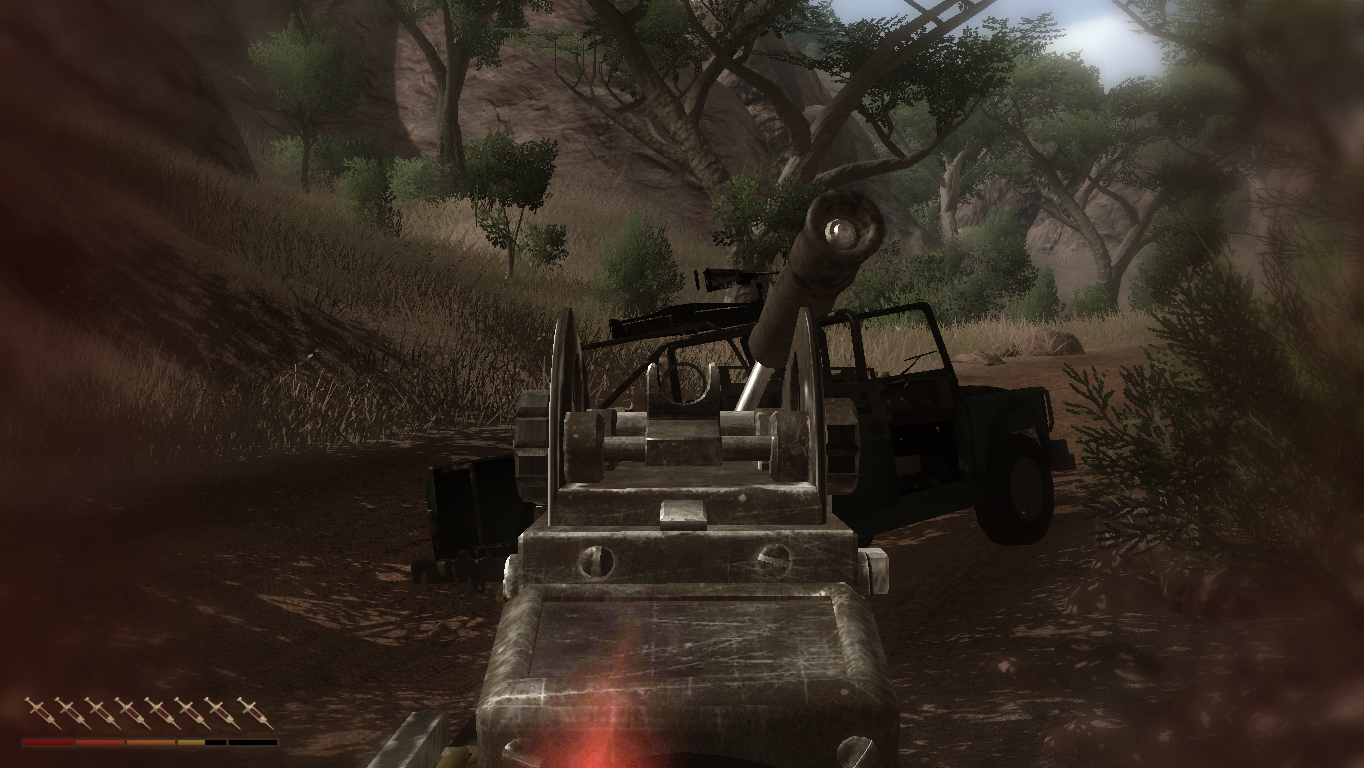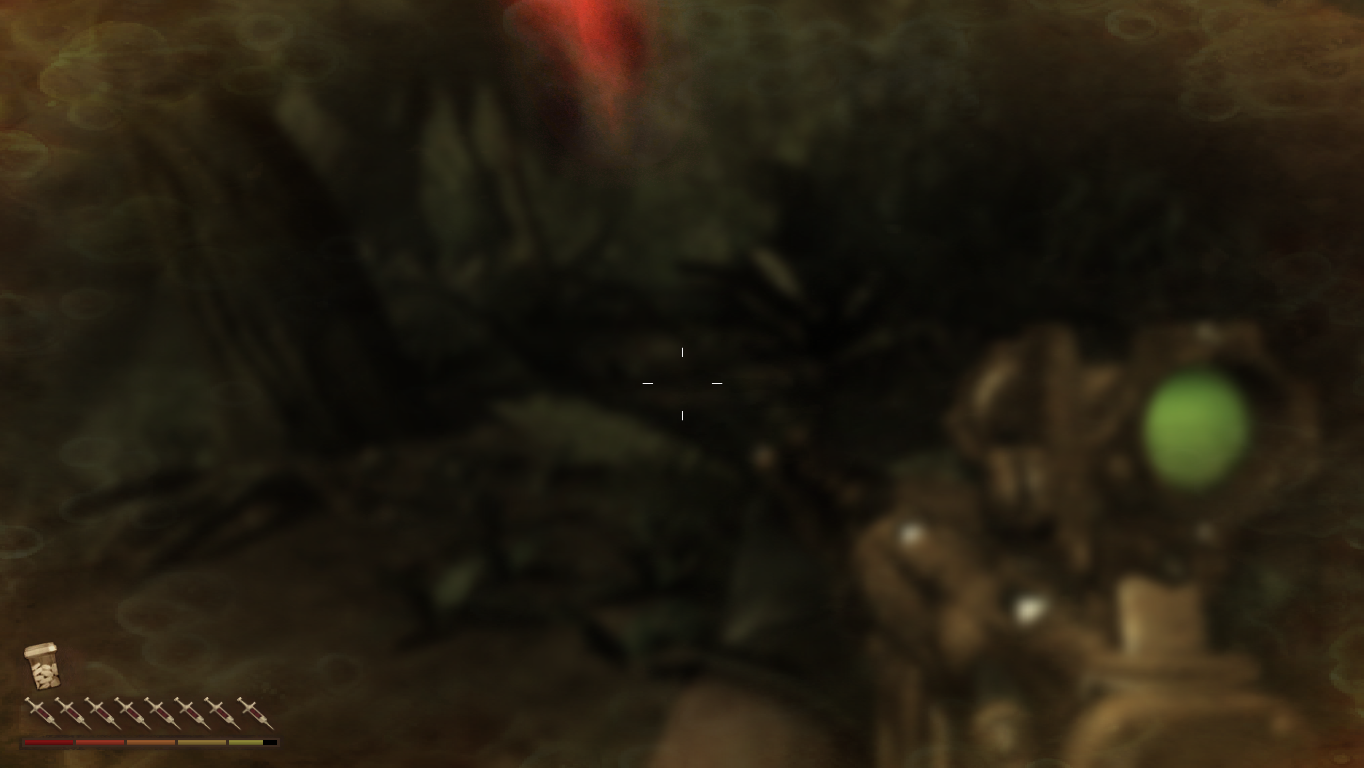Given my grumpiness towards PUBG (see earlier post), it was perhaps not surprising that the game I took up during the holidays was, in many ways, just the opposite. It neither had guns (okay, maybe one), nor loot drops, nor – and most importantly – multiplayer. Instead, it was what some people call a walking simulator. You walk, talk to people in choreographed sequences and discover things. Sure, there are QTEs, but that is it. If you think this is boring, remember that Life is Strange was a walking simulator by this definition, and I’ve been hooked to them since. In between, I played another called Gone Home. And now, The Council. The Council is the first historical game of this genre that I’ve played, and I was equal parts excited and worried about how this would pan out. All I can say – and I shall justify myself below – that I was right in being equally excited and worried, since this game is both a step forward and backward for the genre.
Graphics
Given that this game came out in 2018, the graphics were always expected to be top-notch. In a majority of scenarios, this is indeed the case. The game takes place in the late 18th Century (January 1793) and we are treated to the mansion of a rich British aristocrat. The devs pulled out all stops when ensuring that the game looks and feels realistic. Once you are out of the rather dreary (Vampyr like) docks, you are treated to a breathtaking hall with large paintings that somehow aren’t just décor but have actual plot value. Right in front of you is a huge bronze statue sticking out of the wall. The pillars, floors and doors are all rendered in exquisite detail.
It only gets better from here. As you explore the mansion, you discover large salons with furniture that has been rendered down to the finest etchings, fireplaces that are as realistic as one can expect, and décor that deserves the newest rendering tech namely ray-tracing to reach its full potential. Shadows and reflections are especially notable, since the halls have smoothened and hence reflective floors.
Move outside, and the gardens are equally beautiful during both day and night. Statues in marble (or some other white stone) bask in the winter sunshine, their shadows carefully rendered and appearing completely natural. Move into the crypt, on the other hand, and the torches and stone walls make for an eerie experience.
Things only start going downwards when one moves to the character models. It is understood that walking simulators generally don’t have the budget to do live action recording of the people. Hence, unlike Far Cry for instance, the actions are rather woody. More problematic are the facial expressions. While no one expects the facial expressions to be as realistic as the background, it is very weird when the character’s eyes consistently look away when you’re talking to them. Lips move without any relation to the words being spoken, and the skin neither wrinkles nor stretches when the figures change “expressions”. This would have been fine had it been a top down or even third person game, but the dialogues are delivered “over the shoulder”, giving you an effectively first person view of the person you’re speaking to. This, combined with the deadpan expressions and wandering eyes, seriously made me wonder whether the plotline involved a lot of undead people living out the same experiences over and over again.
Last but not least, let’s not pretend there are no artifacts or glitches. None of them are game-breaking, or plot-breaking at any rate, but they are very much there. The protagonist spends more than a little time standing inside other characters, while their limbs gently disappear into walls. Lighting errors arise from time to time. But these are relatively minor, and never detract from the game so much as the deadpan expressions do.
Overall, the game could have invested a little more time and effort into the characters. This is especially tragic since the character models are actually quite good. The skin tones are accurate, the wrinkles (static as they are) appear natural and the proportions are just about right. One could argue that they overdid the breasts on the primary love interest (more on this later) but that too is forgivable. If only these characters didn’t look like wooden dolls with crooked eyes, one could earnestly say that this game truly brings the time to life in a way that others (AC Unity for instance) could not.
Rating – 4/5
Plot
You are Louis de Richet, son of Sarah de Richet, and member of the Golden Order. Your mother went to attend a secretive meeting on an island with a bunch of rich and important folk hosted by an old aristocrat called Lord Mortimer. Then she disappeared. Now Mortimer wants you to attend and help find her. So you turn up one cold January night of 1793 in search of answers.
With this premise, you start out your quest to find your mother. Soon you learn that you are meant to basically replace her until she is found, and in doing so, serve the mysterious Golden Order. There are other members of the order – notably Emily Hillsborough, a rich duchess who serves as a confidante of the British Prime Minister, William Pitt the Younger. For plot purposes, she is the primary love interest (more on her in the next section). Others are all famous figures of the day, including George Washington, Napoleon Bonaparte, Manuel Godoy, and others. Added to them are the mysterious Miss Adams, Mortimer himself and his friend Sir Holm.
Your task is to basically talk to each of these people and find out what happened prior to your mother’s disappearance. It becomes clear early on that she is still alive and very much on the island. It also becomes clear that she has already made some enemies, who interestingly, don’t consider you on her side. Instead, they actively solicit your help to obtain their own ends, or simply to avoid her.
All this would have been fine enough, but fine isn’t what this game is about. Instead, it sparkles due to its historical setting. It is implied that Mortimer invites influential people to his place to propose world-changing treaties. These are debated and if approved by unanimous vote by all (Mortimer and Holm abstaining) it soon comes to pass. The current debate occurs on the transfer of Louisiana from Spain to France. Given that this was an actual historical event which preceded the Louisiana purchase from France by the USA, one could expect some historical depth to the whole narrative. Which there definitely is! The game refuses to go for simple us-vs-them situations. Instead, you are required to carefully draw out conclusions and persuade people using actual historical arguments.
For instance, you can persuade Godoy that Spain actually stands to gain from the transfer. Washington can be told that USA would eventually get the land, and this breaks his resistance to having a colonial (and currently unstable) power next to his own. In turn, characters would seek to persuade you to switch sides from Mortimer to Holm, or Holm to Mortimer. Since Mortimer proposes and Holm opposes, you have to carefully evaluate the validity of your arguments at each step. Making this a little easier are the character traits, which allow you to choose which weaknesses of characters to exploit, and which immunities to avoid. That said, the conversations aren’t fragmented skill exploits, but rather meaningful and add to the historicity of the whole game. One can only imagine how much research went into creating what appears on the surface to be a simple detective story.
All of this doesn’t imply, however, that you can simply play high politics and not focus on the real issue at hand. Developments across the spectrum of characters leads you to make choices, which in turn have consequences on the rest of the game. With no one cast in black or white, you are forced to eke out your own conclusions and follow them to their logical ending. On the way, you will take both honourable paths such as direct dialogue, and less honourable ones, involving snooping into people’s rooms and eavesdropping, to figure out the whereabouts of your mother and your own role therein.
If the game had built on this to reach a purely human, rational and historical conclusion to the game, I wouldn’t have been so conflicted (as evident from the title of this review). The problem with the game is that somewhere down the line, the budget began to thin out. All the erudition went out of the window, and in came – daemons. Yes, all the historical nuance and careful character development is thrown out once you find your mother and she (spoiler alert!) declares that Mortimer and Holm are in fact, daemons.
It would have still been fine if you’d fled at this point according to your mother’s plan. It would make for an awfully short game, but still leave it with some clothes on. Instead, the plot now becomes a daemon fest with everyone turning out to be a daemon. Emily? She’s a daemon and your sister! Mortimer ? Daemon, and your father! Holm ? Mortimer’s brother and your uncle and also a daemon! And you, dear Louis? Daemon-spawn!
The problem with the game is that it no longer tries to weave in the historical setting with the daemon business. Beyond some biblical bull about daemons always having been there and always having guided men, there is no grounding in the French Revolution, the Louisiana purchase or for that matter, anything else. Suddenly, everyone around you who is not a famous character turns out to be a daemon, and everyone is your relative. Your quest is to find your place in the daemon world now, dealing with some Father figure (who inhabits Miss Adams’ body) and using new daemon skills such as mind control and reading thoughts. All of which detract so wildly with the calm historical storyline hitherto developed that you feel like throwing your keyboard at Mortimer’s face.
It is to the credit of my patience that I persevered with this warped story, siding with one daemon and then another, and then again with another daemon, to finally kill Mortimer. The finale, if it can be called that, was the utter nadir of the whole affair. Suddenly everyone began throwing their arms as if to fight invisible forces, I limped up to Mortimer and stabbed him. To hell with the story, we need X-Men stuff and we need it now! Meh!
In the end, you dear reader can understand why I feel so conflicted. It feels almost as if the first part was developed by a sober group of people coming from different walks of life, who put in the effort to create a real historical game that would fit the historical narrative but still offer meaningful choices. The second half was developed by a bunch of dudes high on fentanylated heroin who could neither think straight, nor bother to develop what had already been taken to a high level of finesse. Instead, daemons appeared in their fevered hallucinations, and they wrapped it up with some superhero stuff. They’re probably off doing krokodil with whatever they could eke out of the dying budget.
Never have I played a game that was so good in half and bad in the other half. A truly Dr. Jekyll and Mr. Hyde affair.
Rating – 2.5/5
Characters –
Thankfully, the characters remain lively and appealing throughout. The most important of them is Mortimer, and while he is introduced a bit later, you are likely to have a ton of conversations with him. The voice acting is superb, and he really does come across as a man of firm convictions who wishes to see change in the world but on his own terms. He chafes against the control of the daemon family and wants unlimited control, yet is not a maniac. He has done terrible things, but only to further goals that one cannot entirely disagree with. His methods are Machiavellian, but they make him all the more difficult to refuse. Not surprising then that I ended up following him up to the very end, only realizing what the game wanted me to do at the very end.
Next in importance is your love interest and the only fulsome wench (to use 18th century terms) on the island. Having risen from obscure origins, Emily Hillsborough married a declining nobleman and now moves suavely in elite circles. She is here to represent the British crown, having become the secretary to William Pitt the Younger. She is one of the first characters you meet, and from the time she gives you her handkerchief, you know her sole purpose here is to be the female foil to the male protagonist.
That said, she isn’t there simply to be taken for granted. Play her character dialogues badly, and you could end up losing a valuable ally. She has useful information on most of the characters, is refreshingly honest with you regarding her locus standi and looks to your advice on critical issues. All of this allows you to confide in her and obtain useful reactions, instead of risking the same with the others. That said – and I reiterate – play her wrong and she will mess things up for you.
Play her right though, and the chemistry develops gradually but surely. This culminates in you being given the option to sleep with her on the second night itself. You could do so, or end up getting drunk with the unstable Miss Adams. It is unclear whether Adams has sex with you, but what is clear is that being with Adams is more important that taking the duchess to bed. This becomes clear when, on the very next night, you get to sleep with her again, regardless of the choices you make in the conversation prior. Given that you can spend two out of four nights in Emily’s warm embrace, it is safe to say that she presents a not very difficult but quite satisfying romantic angle to the whole plotline. When she goes onto kill your mother to avenge her sister (not knowing that she is still alive) the love story takes a tragic but not unexpected turn.
From here, one could expect the love to wither or blossom, based on how two individuals see each other’s actions in the larger context. Could they rise above their own familial emotions and find warmth in each other’s hearts ? Or would there be more tragedy in the offing ? Sadly, all this is lost on the meth addicts. Emily becomes a daemon and turn out to be your sister, so that even when she is wearing next to nothing in bed, you can’t join her there. Later, she – and her now reanimated sister – who is also your sister, join their brother, which is you, to take down Lord Mortimer, who is the father of all three. Did the sentence make sense ? No ? Don’t do drugs kids!
Let’s now come to Sarah. She is an ageing femme fatale who knows how to get the work done. She is the leader of the Golden Order and hence commands an important presence. She came to the island looking for the Al Azif, and then went into hiding. She has committed a number of heinous acts, including torturing a young Miss Adams, and killing Emily’s sister Emma. But what are her motivations? Daemons of course! And off you go with her into daemon world, unlocking crypts to find Longinus’ spear and then trying to escape only to be trapped in conversation with Lord Mortimer. By the time you get out (and I think you can get out earlier), you find Emily has shot her.
This should have been the tragic end of the whole affair. But….. she comes back in a suspended reality sequence where she beseeches you to save her from limbo. Funnily enough (meth!) Louis now addresses her as Sarah without providing any explanation as to why he has suddenly stopped calling her Mother. Even more funnily, Sarah is perfectly fine with this. In the end, all your promises to help her come to nothing and she is – this time finally – never heard of again.
Beyond these, there are the other characters. Holm is the arch-opponent and also close friend of Mortimer, who shows a distinct coldness towards Louis from the very beginning. He eventually turns out to be Mortimer’s brother and well, a daemon. Mortimer tries and succeeds in killing him, which is your cue to turn upon your father and kill him. Decent voice acting, but not a very important role.
This leaves us with the truly human, non-daemonic characters. Of these, Cardinal Piaggi comes across as the most convincing with his cracking voice, conservative yet wise opinion and lack of exaggeration. He is a friendly person who can be easily persuaded when needed, and next to Emily, can be a good ally. The others – Napoleon, von Wollner and Godoy, are more difficult, and can oppose you openly on occasion. They are also somewhat shallower, and hence less appealing than the characters mentioned above. Godoy for instance, appears vain without any mitigating qualities, and Napoleon appears ambitious and nothing else.
Finally, we have the servants. I had expected them to take off their masks and spring a surprise at any moment. Yet they remained faceless servants and never did do anything more than offer up some amber or a book or provide basic directions.
The verdict, then, must be the same as it was for the plotline. The most interesting characters become interesting because of the deep contours inherent in their psyches, that you must unravel one dialogue option at a time. But then they become boring simply because the meth addicts flatten everything with a rolling pin. Thankfully, the characters are not so much damaged by the heroin rampage as the core story itself, and you can still take away a few positives at the end.
Rating – 4/5
Gameplay –
Gameplay revolves around moving around and clicking things and people. If it is people, you get dialogue options. Once you choose a dialogue option, the person responds and you move to the next dialogue option. Embedded in these options are special ones that involve use of skills. Skills are social abilities that exploit specific vulnerabilities of the target character to figure out what the right answer would be. These vulnerabilities are discovered through hit and trial, but are also sometimes exposed directly. Either way, using them would allow you to bypass their defences. On the other hand, running up against immunities would trigger hostile reactions and push you back.
All of this gets much more intense during confrontations. While some truly are confrontations, others are merely forced conversations eg. The one with Miss Adams on the stairs. Either way, failing them has very serious consequences, including cutting off later dialogue options and vital information about the character and others as well. Failing one particular confrontation will even lead to physical injury for Louis, while failing another would kill off an important character. To make matters worse, you only have a limited number of attempts, and exhausting them would lead the confrontation to fail. At best, the character will storm off in a huff. At worst, you or someone else will be seriously injured.
All the skills are arranged in three trees, based on the character type you choose. The one you choose has all its skills unlocked at level 1, while the others are locked and have to be unlocked manually. Following each segment, you get a specific number of skills points. Add a specific number to unlock a skill, then upgrade to level two and three. Level 2 and 3 aren’t fundamentally different, except that they require lesser and lesser effort points. Based on your own actions and dialogue/confrontation successes, you would also get additional skill points deposited in specific skills. They would also net you more XP which would increase the chance of a level up and hence more skill points. Finally, you can get skills from reading books you pick up around the mansion (or borrow from individuals).
Beyond this RPG-esque maze, there are also Talents and Traits. Talents are unlocked when specific combinations of skills at specific levels are unlocked. Most of them require at least one skill at level 3, and hence aren’t the easiest to unlock. Traits on the other hand are given based on how you fare in the conversations and puzzles. Do them well, and you would only get positive traits. Do them poorly, and you would get negative traits. As you’d expect, positive ones reduce costs of certain skills while negative ones add to them. Again, very RPG-esque.
Like most walking simulators, there isn’t a health bar since there isn’t a real threat to your life. Instead, what you have are a number of effort points. Using skills costs effort points. These can be replenished using Honey/Royal Jelly, which can be found lying all around the place. Using too many will lead to negative effects, which can be cleared with another potion called Carmelite Water. There are two others, which are used to make a single skill use free of effort point cost, and reveal weaknesses for a limited time. In practice, the game only requires use of the first two, and I ended up with far more of the remaining two than I needed.
I also mentioned that you could click on objects. Such clicking can involve elaborate puzzles. Sometimes, as in the Medusa puzzle, the pieces are physical and therefore easy to piece together. However, there are far too many puzzles involving the bible (which I guess is why the erudite people were thrown out and the methheads brought in). For someone who has not read the bible, it was very difficult to piece together what would probably be simply deduction for Christians. Matters aren’t helped by the fact that the puzzles are nested i.e. there is a puzzle inside a puzzle, and all of them involve flipping through pages (actually book dialogue options). This has rightly been called tiresome by Steam reviewers, since it detracts from the real storyline and the pace of the plotline.
Finally a word on the daemon skills. There are basically two – mind reading and body control. Mind reading costs daemon skill points, which cannot be replenished by drinking any potions and must be obtained through clever use of dialogue options itself. By this time though, the ordinary skill use system would have become second nature and replenishing these points isn’t such a hassle. Body control, on the other hand, occurs in two strictly choreographed sequences with strictly fixed results if done right. Hence, it is not so much a real skill as a plot device.
I cannot say I’m dissatisfied with the gameplay. The use of skills and skills alone in conversation is an excellent way to maintain a façade of realism while forcing you to carefully evaluate individuals and information before committing to a course of action. This, like in real life, provides excellent incentive to think before acting, even when you have multiple skill options before you. Skill options are pretty unpredictable, and so investing only in a certain tree is not feasible. Instead, you have to be prepared to remain at level 1 with many skills and then move to level 2 with some. Even then, you would be caught with some skills which you may have but which would require a higher effort cost, forcing you to carefully balance the options. The coke addicts messed it up somewhat with their mind reading daemon skill, but by carefully not using it, I managed to retain the feel of the first part of the game. So if you’re a bit careful, the gameplay can be fun and riveting, barring some puzzles of course!
Rating – 4.5/5
Conclusion
As would be clear by now, the game suffers from a personality disorder. Half of it is scintillating and promises so much more, while the other half breaks it all up in favour of a clunky, dysfunctional and childish daemon story. This damages the plot more than anything else, but can also have an impact on gameplay and characters. On the other hand, some aspects – such as the puzzles – demand too much erudition and hence go beyond the average non-Christian player. If the game could have avoided these extremes, it could well have heralded a new age in the genre of historical games. Instead, it remains an unfinished masterpiece, where one part is painstakingly drawn out, while the other appears nothing more than childish scribbles.
Overall Rating – 3/5
